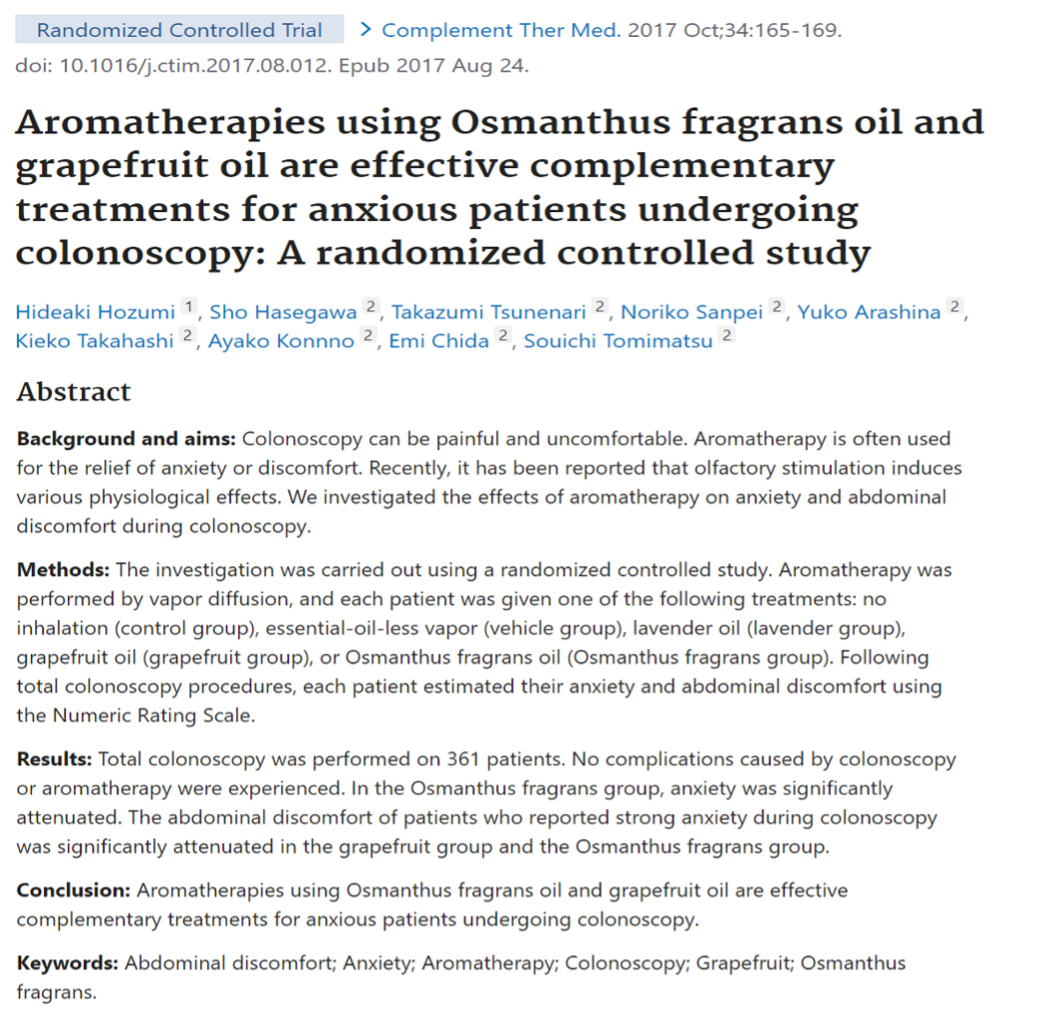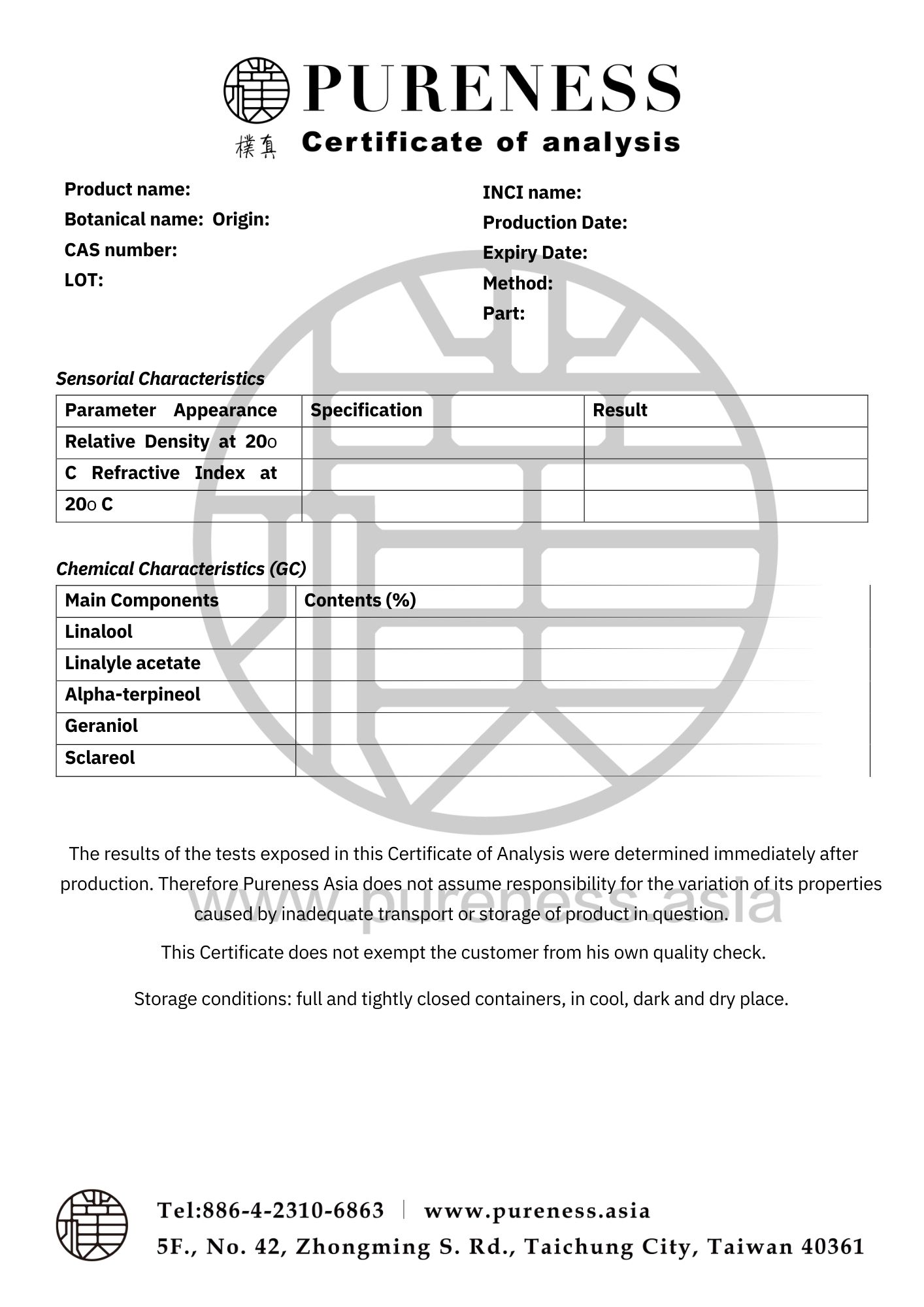
Osmanthus
Scientific name|Osmanthus fragrans
Origin|China
Classification|Flower series
Specifications|500g-25kg Please contact sales for details
Extraction part|Flower
Extraction method | Abs.
Plant family|Oleaceae
Aroma|The scent is pleasantly fragrant, rich, and elegant
▎Essential Oil Introduction
Osmanthus, also known as Osmanthus fragrans, is a species from the olive family with a long history of cultivation in China. The plant produces clusters of small, silver-white flowers that are highly aromatic when in bloom. The flowers have four petals, and the fruit turns black when mature, though it rarely bears fruit in Taiwan. Osmanthus symbolizes success and wealth.
In ancient China during the Warring States period, Osmanthus was used not only for brewing wine but also for perfuming tea and clothes. The flower oil was extracted for various uses, and it was also known as the "Flower of Lovers," given as a token of affection in romantic relationships. Even the kings of Korea and Yan State exchanged Osmanthus flowers to signify friendship.
Osmanthus is edible and is famous for adding a natural fragrance to desserts. While it has been mainly used for ornamental purposes, recent research highlights its health benefits. All parts of the plant—roots, stems, leaves, flowers, and fruit—have medicinal value. This is well-documented in traditional Chinese medicine. Recent studies on Osmanthus' secondary metabolites have categorized them into three main types: flavonoids, terpenes, and phenolic acids.
▎Component Analysis
|Main component: Phenylester
The primary components include α-Ionone, β-Ionone, Linalool, γ-Decalactone, γ-Octalactone, Geraniol, and various esters.
|Research Validation

▸ Extensive research has identified numerous phytochemicals in osmanthus flowers with potential health benefits. The volatile compounds in osmanthus are complex, though they are present in relatively small amounts.

▸ Studies have shown that both osmanthus oil and grapefruit oil are effective in aromatherapy for alleviating anxiety.
|Raw Material Certifications
To obtain relevant certification information, please contact us on WhatsApp.
▎References
- Fu CC, et al. Secondary Metabolites of Osmanthus fragrans: Metabolism and Medicinal Value. Front Pharmacol. 2022. Jul 18;13:922204.
- Wu L, et al. Exploration of Osmanthus fragrans Lour.'s composition, nutraceutical functions and applications. Food Chem. 2022. May 30;377:131853.
- Wang B, et al. Traditional uses, phytochemical constituents and pharmacological properties of Osmanthus fragrans: A review. J Ethnopharmacol. 2022. Jul 15;293:115273.
- Wang Z, et al. The complete mitochondrial genome of Osmanthus fragrans (Lamiales, Oleaceae) from China. Mitochondrial DNA B Resour. 2021. Jun 21;6(7):2056-2057.
- Chen H, et al. Whole-genome resequencing of Osmanthus fragrans provides insights into flower color evolution. Hortic Res. 2021. May 1;8(1):98.
- Liao X, et al. Identification and quantification of the bioactive components in Osmanthus fragrans roots by HPLC-MS/MS. J Pharm Anal. 2021.
- Shi Y, et al. Genome-wide miRNA analysis and integrated network for flavonoid biosynthesis in Osmanthus fragrans. BMC Genomics. 2021. Feb 27;22(1):141.
- Kong F, et al. Assessing the impact of climate change on the distribution of Osmanthus fragrans using Maxent. Environ Sci Pollut Res Int. 2021. Jul;28(26):34655-34663.
- Zhang Y, et al. The Potential Protective Effect of Iridoid Glycosides Isolated From Osmanthus fragrans Seeds Against the Development of Immune Liver Injury in Mice. Front Pharmacol. 2021. Nov 8;12:760338.
- Song HY, et al. Bioactivity-Guided Extract Optimization of Osmanthus fragrans var. aurantiacus Leaves and Anti-Inflammatory Activities of Phillyrin. Plants (Basel). 2021. Jul 28;10(8):1545.
- Fu J, et al. Transcriptomic analysis of flower opening response to relatively low temperatures in Osmanthus fragrans. BMC Plant Biol. 2020. Jul 16;20(1):337.
- Jeong DE, et al. Anti-inflammatory activity of phenylpropyl triterpenoids from Osmanthus fragrans var. aurantiacus leaves. Int Immunopharmacol. 2020. Sep;86:106576.
- Hozumi H, et al. Aromatherapies using Osmanthus fragrans oil and grapefruit oil are effective complementary treatments for anxious patients undergoing colonoscopy: A randomized controlled study. Complement Ther Med. 2017. Oct;34:165-169.
|Some images sourced from the internet. Contact for copyright removal|





